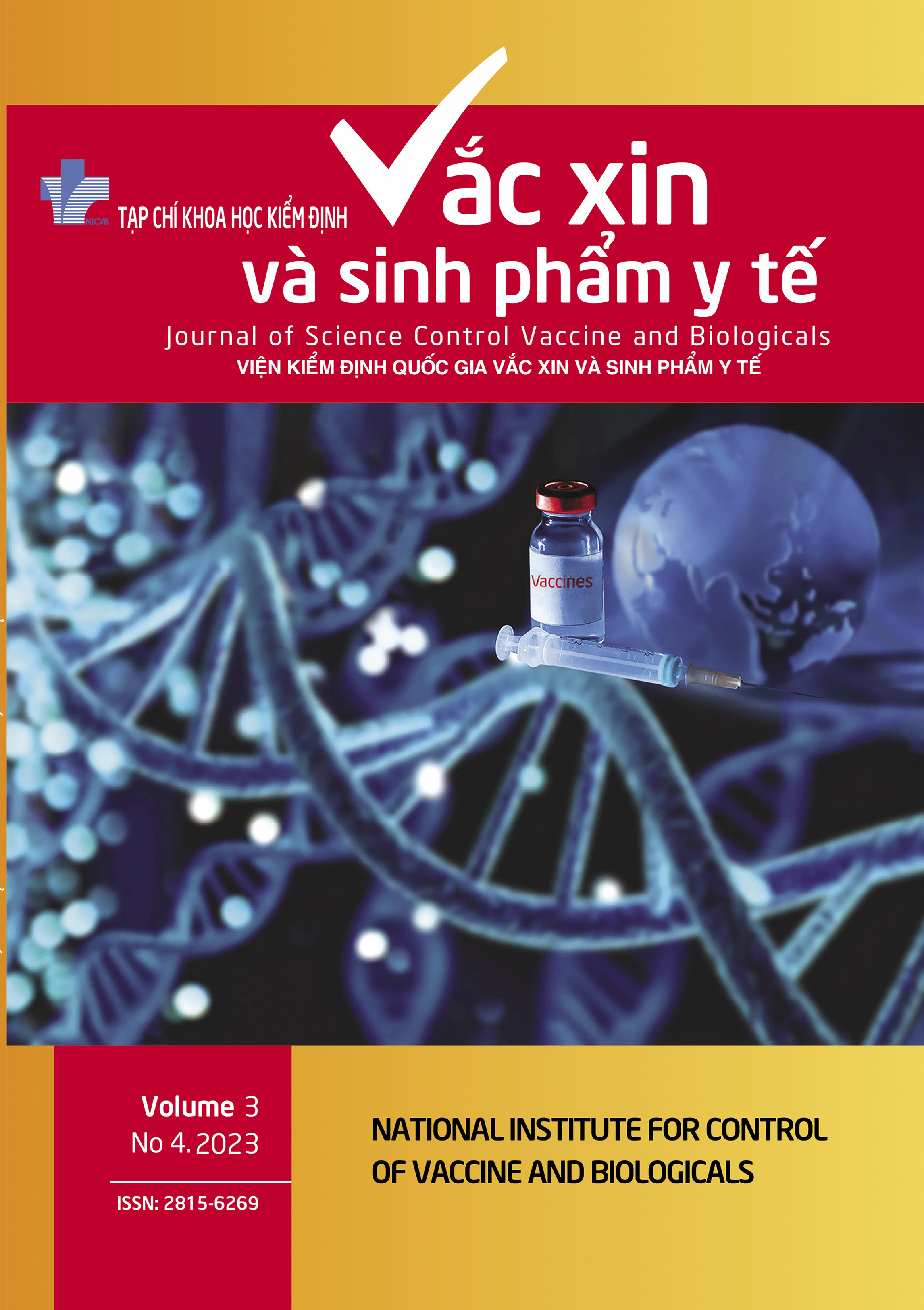EVALUATING THE STABILITY OF PERTUSSIS STRAIN B. PERTUSSIS 18323 IN TESTING THE EFFECTIVENESS OF PERTUSSIS VACCINE
DOI:
https://doi.org/10.56086/jcvb.v3i4.125Keywords:
LD50, NICVB, Pertussis strain 18323, efficacy testingAbstract
The efficacy testing of the whooping cough vaccine is one of the mandatory tests recommended by the WHO and is a quality standard for vaccines in the Vietnam Pharmacopoeia 5. The principle of the efficacy test is to evaluate immune response after immunization in mice using the method of challenge with pertussis strain 18323. Therefore, assessing the quality of the challenge strain used for testing also contributes to making the testing process more accurate and reliable. The pertussis strain, after being kept in liquid nitrogen, is tested for the 50% lethal dose (LD50) every 3 months by challenge injection into mouse brains to evaluate the stability of the challenge strain.
The research results indicate that the LD50 values of the pertussis strain at different time points during the storage and preservation under liquid nitrogen at 3, 12, 24, and 36 months are (295,940; 255,737; 219,063; and 243,405 bacteria), respectively. The lowest LD50 value is 175,216, and the highest LD50 value is 295,940, meeting the requirements according to the standard of 50-400 bacteria. Next, these values fall within the range of TB ± 2SD, meeting the requirements according to the corresponding standard with fluctuations within the 95% confidence interval.
The research results demonstrate that the pertussis strain 18323 remains stable under liquid nitrogen storage for a monitoring period of 36 months, meeting the quality standard when preserved under frozen conditions in liquid nitrogen for efficacy testing of pertussis strain at the National Institute for Vaccine and Biologicals (NICVB) and the manufacturer







